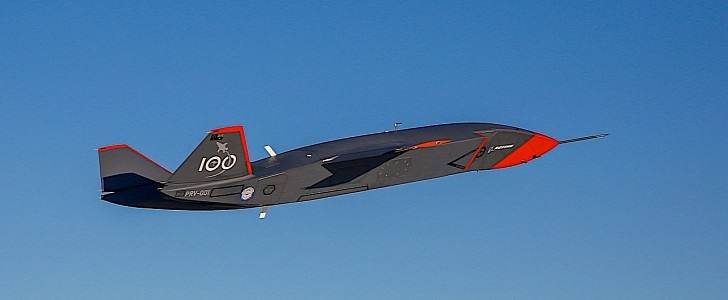Back in 2020, Boeing let the world know it is working on a new combat drone, one that is powered by an artificial intelligence system, and would be capable of working alongside crewed aircraft. It was at the time introduced as the Boeing Airpower Teaming System (BATS), the first Australian-produced military combat aircraft in over half a century.
Also known as the Loyal Wingman on account of the development program that gave birth to it, the drone has been rechristened this week, at the Royal Australian Air Force (RAAF) Base Amberley, in Queensland, as the MQ-28A Ghost Bat.
The BATS will eventually be available for global operators, but the Ghost Bat designation will only be employed for those deployed with the Australian military. The rest of the world will continue to know the drone as the Airpower Teaming System.
“The introduction of the new popular name is a rare and special moment in aviation history for our RAAF partners and industry team of over 35 Australian suppliers,” said in a statement Glen Ferguson, director Airpower Teaming System Australia and International.
“Selecting the Ghost Bat, an Australian native mammal known for teaming together in a pack to detect and hunt, reflects the unique characteristics of the aircraft’s sensors and Intelligence, Surveillance and Reconnaissance abilities, and is a fitting name for this pioneering capability.”
The drone is still undergoing testing, and for the remainder of 2022, the efforts of its engineers will focus on sensor and missionisation capabilities. Back in November last year, Boeing introduced into the test program a second drone to expand and speed up capabilities.
Ghost Bat’s general specs are not fully known. We do know the drone is 38-feet (11.7 meters) long and can travel for as much as 2,300 miles (3,700 km) on a single mission. Its main goal is to provide surveillance and reconnaissance, but can also perform electronic warfare if need be.
The BATS will eventually be available for global operators, but the Ghost Bat designation will only be employed for those deployed with the Australian military. The rest of the world will continue to know the drone as the Airpower Teaming System.
“The introduction of the new popular name is a rare and special moment in aviation history for our RAAF partners and industry team of over 35 Australian suppliers,” said in a statement Glen Ferguson, director Airpower Teaming System Australia and International.
“Selecting the Ghost Bat, an Australian native mammal known for teaming together in a pack to detect and hunt, reflects the unique characteristics of the aircraft’s sensors and Intelligence, Surveillance and Reconnaissance abilities, and is a fitting name for this pioneering capability.”
The drone is still undergoing testing, and for the remainder of 2022, the efforts of its engineers will focus on sensor and missionisation capabilities. Back in November last year, Boeing introduced into the test program a second drone to expand and speed up capabilities.
Ghost Bat’s general specs are not fully known. We do know the drone is 38-feet (11.7 meters) long and can travel for as much as 2,300 miles (3,700 km) on a single mission. Its main goal is to provide surveillance and reconnaissance, but can also perform electronic warfare if need be.






